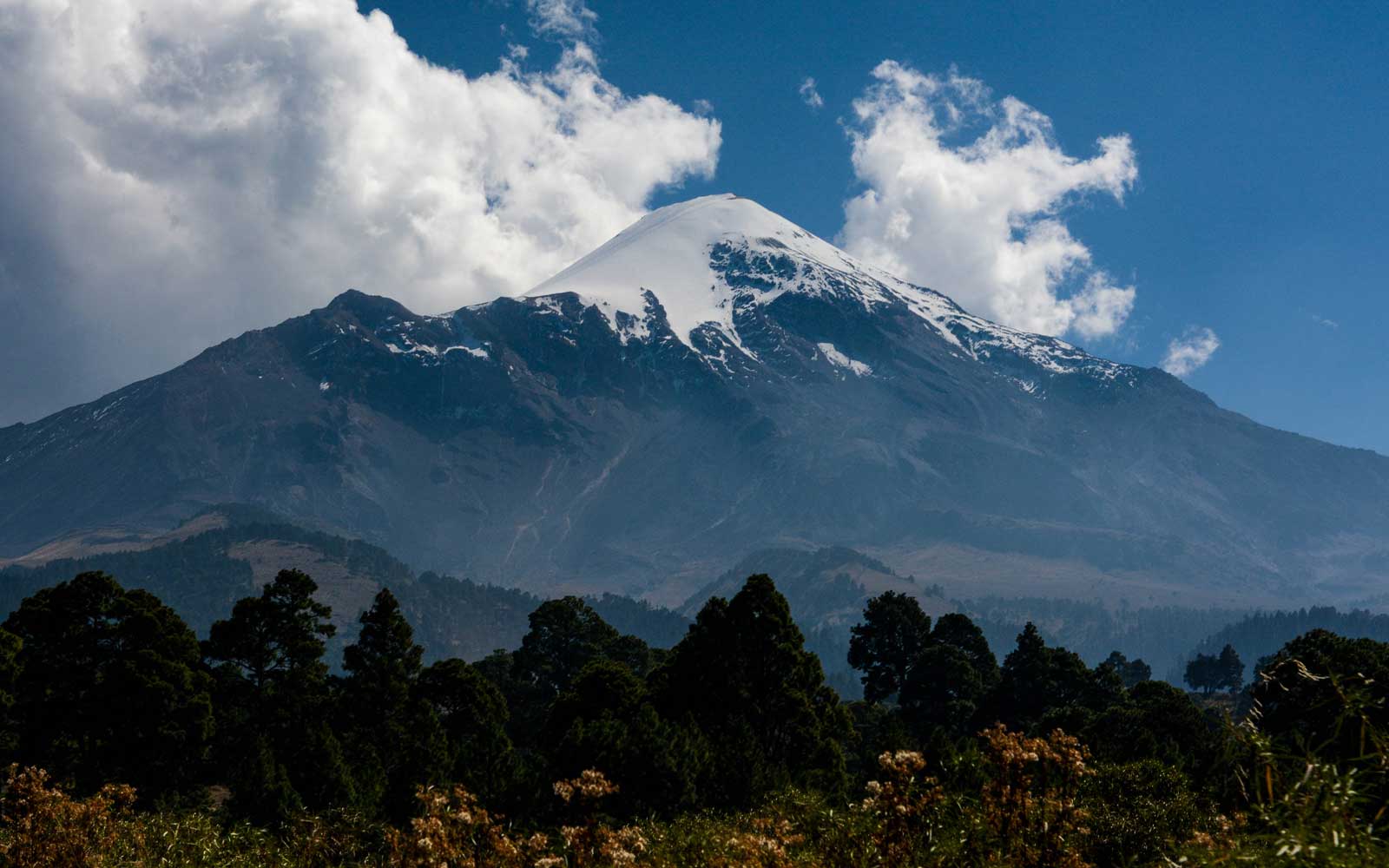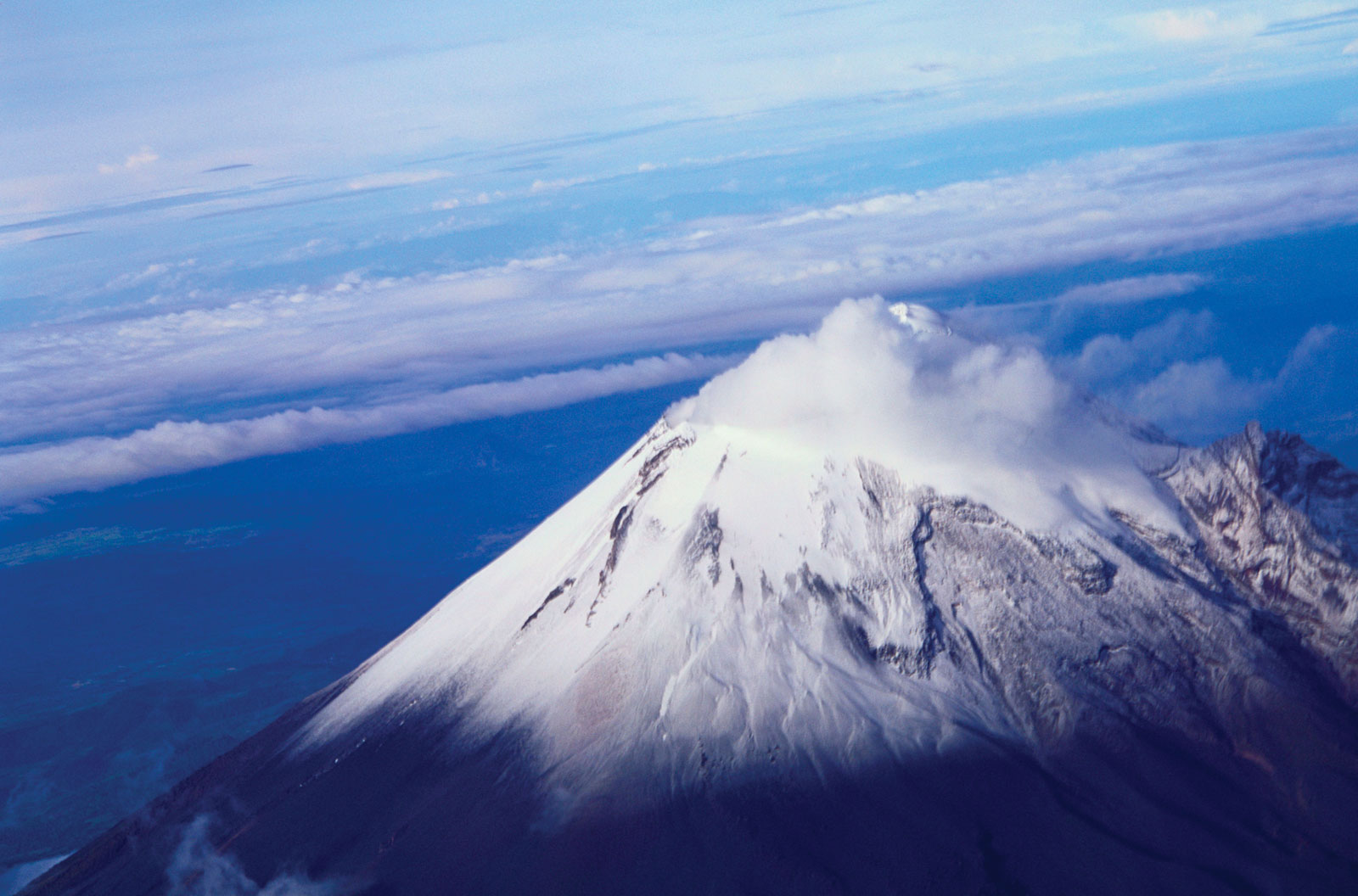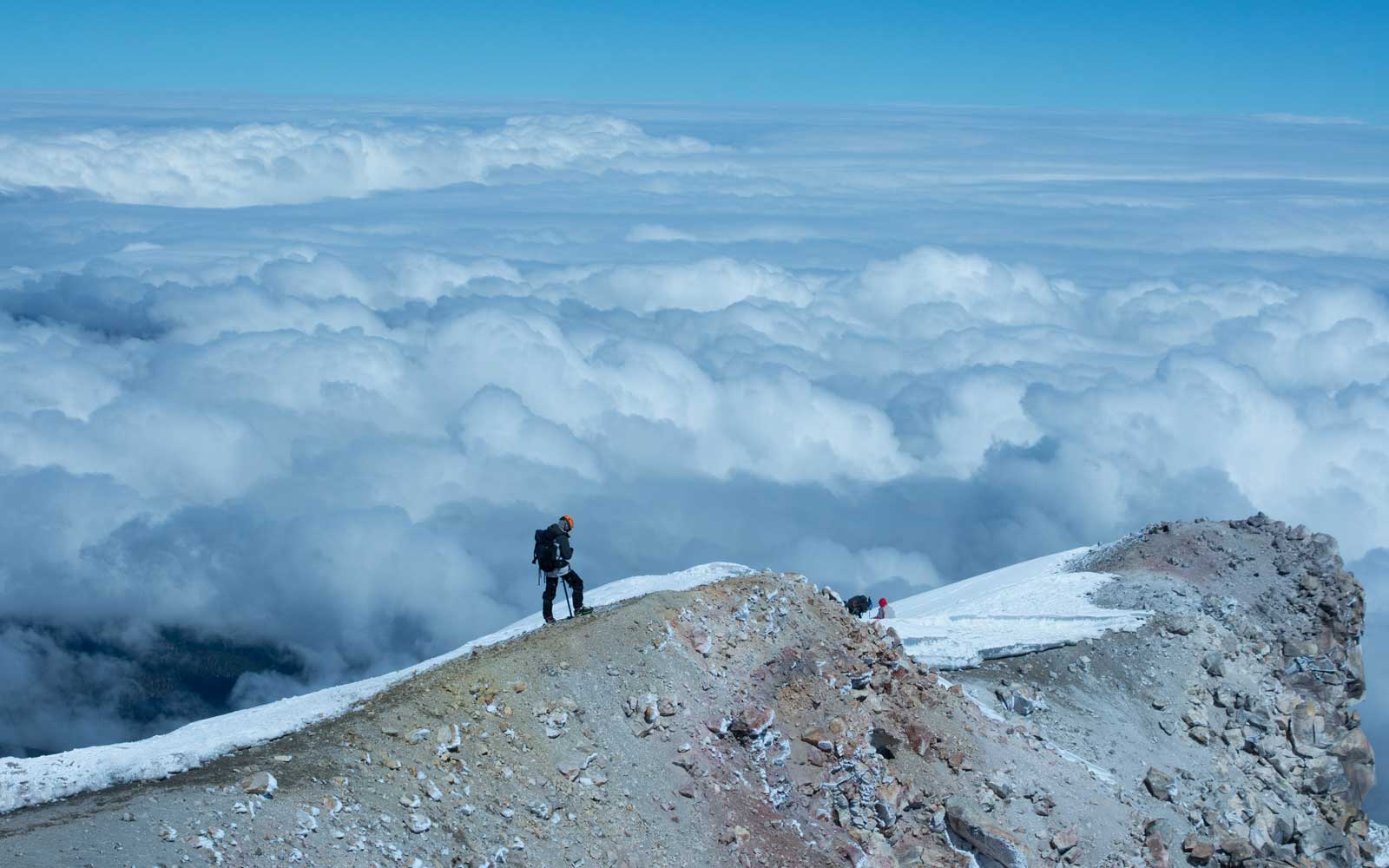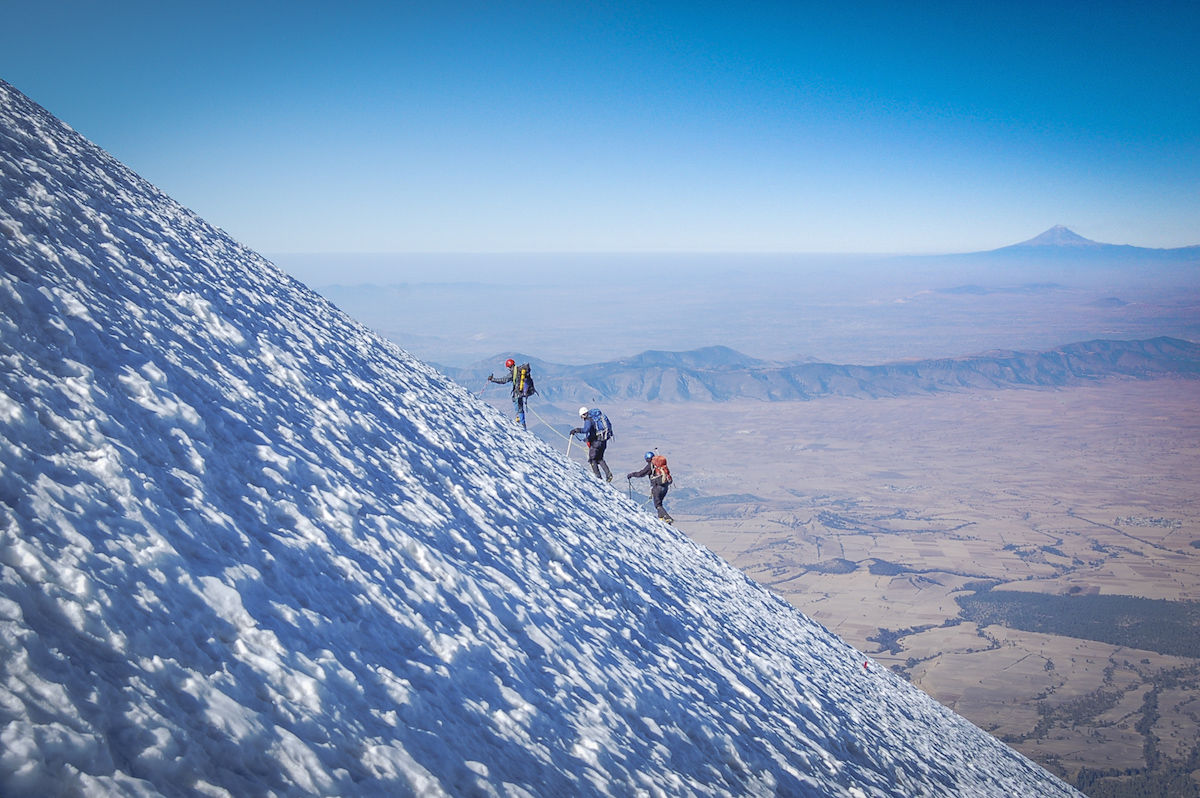El peak of Orizaba It is an inactive volcano that is located on the highest mountain in Mexico and is the highest volcano in North America, historical eruptions have made it a moderately explosive activity and really impressive lava spills. ! We invite you to learn more about this topic here!

What is the Pico de Orizaba?
It is the highest point in Mexico and at the same time the highest volcano in North America, rising to 5636 meters above sea level at the eastern end of the Sierra Volcánica Transversal.
Currently, the volcano is inactive, but it is not extinct, its last eruption took place in 1687. Orizaba is a popular tourist destination, as thousands of travelers visit the place every year, many of whom climb to the top of the volcano.
The Peak of Orizaba, as part of the Sierra Madre, forms a barrier between the coastal plains of the Gulf of Mexico and the highlands of Mexico, the volcano blocks moisture from the Gulf of Mexico due to the saturation of central Mexico and affects the climate of both areas . Both Veracruz and Puebla depend on Orizaba for fresh water, the largest river that occurs in the volcano is the Río Hamap.
Features
Tropical temperatures prevail on the lower slopes of Pico de Orizaba, creating and maintaining a tropical forest habitat inhabited by tree ferns, hornbeams, orchids, philodendrons, tropical hardwoods, and vines, as well as many animal species.
There are grazing areas and forests in the area that are often felled by local lumberjacks, climbing the slopes of Orizaba, a cold forest of pines, oaks, beech trees and sweet gum, where flora and fauna are at your feet, those they are used to the cold climates in which they live.
The pine branches are covered with lichens, bromeliads, orchids, mosses, cacti, ferns and aroids, above this level there is a cold, treeless and rocky habitat, while the upper level is characterized by the snowy peak of Orizaba.
Your first name and what does it mean?
The first natives called it Poyautécatl, which translates as "mountain that reaches the clouds".
Its meaning in Nahuatl
Its Aztec name was Citlaltepetl, which means "Mountain of the Stars".
«The name Citlaltépetl is not used by the Nahuatl speakers of the Orizaba region, Citlaltépetl comes from the Nahuatl citlalli (star) and tepētl (mountains) which means «star mountain»
It is believed that this name is based on the fact that the snow-capped peaks can be seen for hundreds of kilometers throughout the year throughout the region, in the colonial era, the volcano was also known as Cerro de San Andrés due to the village nearby San Andrés Chalchicomula based on it.
A third name has also been recorded, Poyauhtecatl, which means "he who is in color or lit", this name was given by the Tlaxcaltecs in memory of a lost country.
The depth of its crater
The crater is 300 meters (1,000 feet) deep and clearly visible against the surrounding ice and snow cover, several lava flows extend down the sides of the volcano, which are made easily visible by prominent cooling ridges along the sides of the volcano. along its sides, known as flow dams.
Last bang
The historical eruptions have consisted of a moderate explosive activity and the spill of lava flows, the last eruption of the Pico de Orizaba volcano was in the years 1545, 1566, 1630 and 1687 progressively.
First ascent
In 1839, Henry Galeotti was the first European to explore the volcano, but he did not climb to the top, during the American occupation of Mexico in 1848, two American soldiers, F. Maynard and William F. Reynolds, were the first known travelers to reach to the summit of Orizaba.
Later that year, the French explorer Alejandro Doignon also reached the summit, the mountain surely having been climbed before by locals who did not record his achievement in any extant documents.
glaciers
The Peak of Orizaba It is known as one of the volcanoes found in Mexico that still support glaciers and in turn is the habitat of the largest glacier in Mexico, Gran Glaciar Norte. Orizaba which has nine popular glaciers:
- Great North Glacier.
- Chichimeco language.
- Jamapa.
- Bull.
- La Barba Glacier.
- Northwest.
- Western.
- Southwestern.
- Eastern.
The west side of the Great North Glacier generates five outlet glaciers, from north to south, the first two, Glaciar del Toro and Glaciar de la Barba, hang from the cliffs or ice cascades of the glaciers, reaching the top of the passes lava giants at 4.930 m and 5.090 m, respectively.
Although the Great Northern Glacier ice sheet is covered in snow, it is possible to see all seven outlet glaciers on the jagged western edge of the ice sheet, especially the Jamapa Glacier and the Western Glacier.
Seventh tallest mountain on the planet by prominence
Pico de Orizaba is the highest point in Mexico, it is one of the seven largest volcanoes in the world, only surpassed in height by Kilimanjaro located in Africa, the last time the eruption was recorded in 1687. And it ranks 16th. in the world by topographic isolation.
Climbing is suitable for everyone who wants to start climbing mountains, there you will be able to feel yourself in the altitude conditions of one of the Mountains higher, to climb you do not need to use ropes and you do not need to know the climbing technique, you just need to be in good physical shape.
About 110 miles (68 km) west of the port of Veracruz, its peak is visible to ships approaching a port on the Gulf of Mexico and at sunrise the rays of Sunstroke Pico while Veracruz is still in shadow.
Where is the Pico de Orizaba?
It is located in the eastern part of the transversal mountain range of the Volcanic Axis, on the border of the federal states of Veracruz and Puebla, the volcano is currently inactive, but it is not extinct; the last eruptions occurred in 1687 and it is the second largest volcanic peak in the world after Kilimanjaro in Africa.
How big is?
The Peak of Orizaba it is the highest mountain in Mexico, it rises to an altitude of 5636 m of 18,491 feet in the Cordillera Neovolcanica mountain range, it has a topographical fame of 4922 m (16148 feet).
What type of volcano is it?
The volcano is dormant but not extinct and the last eruption took place in the XNUMXth century, it is the second most famous volcanic peak in the world after Africa's Kilimanjaro.
What is the history of Pico de Orizaba?
This peak in pre-Hispanic cultures was one of the most imposing and important and is part of many indigenous mythologies. At the time of the Spanish conquest of Mexico, Hernán Cortés passed through the slopes of Pico de Orizaba, the volcano and the mountains made his trip to Tenochtitlán more difficult and delayed him for many days, during the seventeenth century, the Spanish crown He covered several roads so that they would avoid Citlaltépetl.
One of the highways was routed south of the volcano through the cities of Orizaba and Fortín de las Flores, which became the main trade route between Mexico City and Veracruz on the Gulf coast, a short way was built later by the Jesuits to develop colonies at the base of Pico de Orizaba.
The Spanish used the volcano as a reference point to drive to the port of Veracruz, many battles have been fought near this volcano throughout the fight for independence from Mexico.
On December 16, 1936, President Lázaro Cárdenas, in an attempt to protect the natural beauty of Pico de Orizaba, created a national park with an area of 19,750 hectares (48,800 acres), which included a volcano with the surrounding area and the settlements of Tlachichuca, Ciudad Serdan, La Perla, Mariano Escobedo and Calcaualco, the federal decree became the Federal Law of January 4, 1937.
climbing and relaxation
The peak of Orizaba it is a popular attraction for professional and amateur climbers, as this volcano has a wide variety of paths that can be climbed, the busiest time of the year is between October to March, when the weather is favorable; the temperature does not change much a month, due to being in the tropics and from april to september is the Rainy weather in the region.




